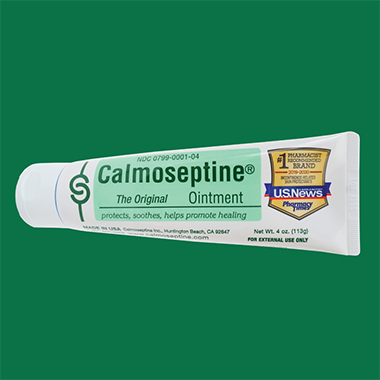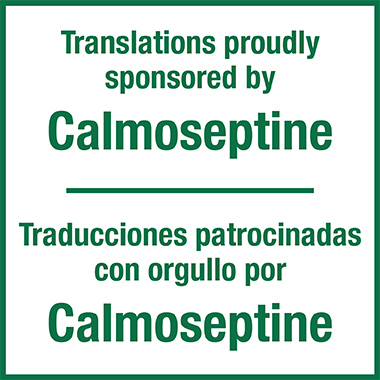Volume 43 Number 2
Complexity of care: Mitigating insidious infection
Jenny Prentice
For referencing Prentice J. Complexity of care: Mitigating insidious infection. WCET® Journal 2023;43(2):7
DOI https://doi.org/10.33235/wcet.43.2. 7
To add to our President and President Elect’s message and in acknowledging the ongoing influence of Florence Nightingale on modern medicine and nursing Nightingale not only expounded the benefits of ‘best care’ she recounted “Wise and humane management of the patient is the best safeguard against infection”1. Further, Ayello on her reflections of Nightingale’s principles for practice reiterates Nightingale’s belief in the importance of skin health whereby, “in almost all diseases, the function of the skin is, more or less disordered; and in many most important diseases natures relives herself almost entirely by the skin”2.
There are many variables that contribute to the development of wound infection; the person, the type and origin of the wound, environmental factors, whether the wound is acute or chronic as well as the specific characteristics of causative organisms and what treatments may be available to prevent or treat infection3.
A common theme within all articles presented here is infection, either as a primary cause of skin infection or a secondary complication of wound healing. The challenges of diagnosing and differentiating between superficial and deep infection in the sternal wounds of paediatric cardiac surgical patients and implementation of wound management pathways and staff education in conjunction with early intervention strategies to manage these wounds are described by Kumar et al.
Shukalek et al use case histories to demonstrate the complexity of diagnosing cellulitis in their third essay on skin and soft tissue infections and other conditions that may mimic cellulitis. The clinical manifestations, pathogenesis, microbiology, differential diagnosis, and prevention of cellulitis are discussed.
The use of negative pressure wound therapy (NPWT)to manage severe infection in the presence of retracted stomas is described by Cwaliński et al. They report on seven patients where severe peristomal infection failed to respond to conventional local treatment using ostomy appliances or specialist dressings and were consequently and successfully treated with NPWT preventing the need for further corrective stoma surgery.
The historical and current use of sugar and variations of dressings for treating wound infection and stimulating wound healing in resource limited settings is outlined by Haesler. Specifically, how granular white sugar is thought to work in reducing wound exudate, facilitate autolytic and mechanical debridement and lessening peri-wound oedema. Sugar’s ability to inhibit bacterial growth is also discussed.
In combatting infection, as described in the above articles, are that an interprofessional and holistic approach are two key elements essential to the prevention, assessment, diagnoses and treatment of infection.
It is always a delight to recognise those who have contributed to the advancement of medical or nursing practice in the same way as we continue to acknowledge Florence Nightingale. On behalf of the Editorial Board I would like to offer our congratulations to Dr Elizabeth A Ayello, PhD, MS, BSN, ETN, RN, CWON, MAPWCA, FAAN for being the recipient of two prestigious awards: the NPIAP JoAnn Maklebust Lifetime Achievement Award for her contribution to the prevention and treatment of pressure injuries and the International Academy of Nursing Editors’ Margaret Comerford Freda Award for Editorial Leadership in Nursing Publication. These awards are exceptionally well-deserved accolades. Dr Ayello’s advice will continue to resonant with current and new practitioners for many years to come.
Best wishes to you all, Jenny.
Complejidad de la atención: Mitigar la infección insidiosa
Jenny Prentice
DOI: https://doi.org/10.33235/wcet.43.2. 7
Como complemento al mensaje de nuestro Presidente y Presidente Electo y en reconocimiento de la influencia que Florence Nightingale ha ejercido en la medicina y la enfermería modernas, Nightingale no sólo expuso los beneficios de los "mejores cuidados", sino que también afirmó que "el tratamiento sabio y humano del paciente es la mejor salvaguardia contra la infección "1. Además Ayello, en sus reflexiones sobre los principios de Nightingale para la práctica, reitera su creencia en la importancia de la salud de la piel, según la cual "en casi todas las enfermedades, la función de la piel está más o menos desordenada; y en muchas de las enfermedades más importantes, la naturaleza se regenera casi totalmente a través de la piel "2.
Son muchas las variables que contribuyen al desarrollo de la infección de las heridas: la persona, el tipo y origen de la herida, los factores ambientales, si la herida es aguda o crónica, así como las características específicas de los organismos causantes y los tratamientos de que se puede disponer para prevenir o tratar la infección3.
Un tema común a todos los artículos aquí presentados es la infección, ya sea como causa primaria de infección cutánea o como complicación secundaria de la cicatrización de las heridas. Kumar et al. describen los retos que plantean el diagnóstico y la diferenciación entre infección superficial y profunda en las heridas del esternón de pacientes pediátricos de cirugía cardiaca, así como la aplicación de vías de tratamiento de heridas y la formación del personal junto con estrategias de intervención precoz para tratar estas heridas.
Shukalek et al utilizan historias clínicas para demostrar la complejidad del diagnóstico de la celulitis en su tercer ensayo sobre infecciones de la piel y tejidos blandos y otras afecciones que pueden simular la celulitis. Se analizan las manifestaciones clínicas, la patogenia, la microbiología, el diagnóstico diferencial y la prevención de la celulitis.
Cwaliński et al. describen el uso de la terapia de presión negativa para heridas (NPWT ) para tratar la infección grave en presencia de estomas retraídos. Informan sobre siete pacientes en los que una infección periestomal grave no respondió al tratamiento local convencional con dispositivos de ostomía o apósitos especializados y, en consecuencia, fueron tratados con éxito con NPWT, lo que evitó la necesidad de una nueva cirugía correctiva del estoma.
Haesler expone el uso histórico y actual del azúcar y las variaciones de los apósitos para tratar la infección de heridas y estimular su cicatrización en entornos con recursos limitados. En concreto, cómo se cree que actúa el azúcar blanco granulado para reducir el exudado de la herida, facilitar el desbridamiento autolítico y mecánico y disminuir el edema periherida. También se analiza la capacidad del azúcar para inhibir el crecimiento bacteriano.
En la lucha contra la infección, tal y como se describe en los artículos anteriores, un enfoque interprofesional y holístico son dos elementos clave esenciales para la prevención, la evaluación, el diagnóstico y el tratamiento de la infección.
Siempre es un placer reconocer a quienes han contribuido al avance de la práctica médica o de enfermería del mismo modo que seguimos reconociendo a Florence Nightingale. En nombre del Consejo Editorial, me gustaría dar la enhorabuena a la Dra. Elizabeth A. Ayello, PhD, MS, BSN, ETN, RN, CWON, MAPWCA, FAAN por haber recibido dos prestigiosos premios: el Premio JoAnn Maklebust a la Trayectoria Profesional de la NPIAP por su contribución a la prevención y el tratamiento de las lesiones por presión y el Premio Margaret Comerford Freda de la Academia Internacional de Editores de Enfermería por su liderazgo editorial en publicaciones de enfermería. Estos galardones son excepcionalmente merecidos. Los consejos de la Dra. Ayello seguirán resonando en los profesionales actuales y nuevos durante muchos años.
Mis mejores deseos para todos, Jenny.
Author(s)
Jenny Prentice
PhD, BN, RN, STN, FAWMA
References
- Health of houses. In: 160th Anniversary Edition Notes on Nursing: What it is, and what it is not. Eds: Florene Nightingale ; with an Introduction by Maureen Shaw Kennedy and commentaries by contemporary nursing leaders. Philadelphia, PA. Wolters Kluwer, 2020; p.21.
- Ayello EA. From Bedsores to Global Healthcare – Insights from Nightingale’s Notes on Nursing. In: 160th Anniversary Edition Notes on Nursing: What it is, and what it is not. Eds: Florene Nightingale ; with an Introduction by Maureen Shaw Kennedy and commentaries by contemporary nursing leaders. Philadelphia, PA. Wolters Kluwer, 2020; p.57.
- International Wound Infection Institute (IWII) Wound Infection in Clinical Practice. Wounds International. 2022.



